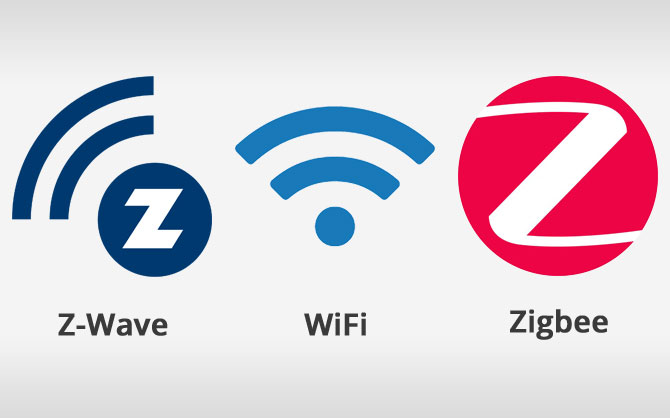Zigbee and Z-Wave are both wireless communication protocols used in home automation systems. Zigbee vs Z wave: Choosing between them depends on specific needs.
Zigbee supports a larger network of devices, making it ideal for extensive, complex setups, while Z-Wave’s lower frequency penetrates walls and objects, providing a more robust signal in certain environments. Both operate as mesh networks, with each device extending the network’s range.
These protocols are crucial for connecting IoT devices and smart appliances, and understanding their key differences is essential for making informed decisions in home automation. Zigbee uses an open network standard, while Z-Wave is based on a closed network standard, providing more security. Whether it’s Zigbee or Z-Wave, both offer distinct advantages for different home automation requirements.
Zigbee
Zigbee and Z-Wave are both mesh networks but differ in range and device capacity. Zigbee supports larger networks, ideal for complex setups, while Z-Wave offers better signal penetration through walls. Each has unique benefits, making the choice dependent on specific needs.
| Zigbee supports a larger network of devices, ideal for complex setups. It provides a more robust signal in certain environments due to its lower frequency. Both Zigbee and Z-Wave operate as mesh networks, extending range effectively. |
Z-wave
When comparing Zigbee vs. Z-Wave, it’s important to consider the specific needs of your setup. Zigbee is ideal for extensive setups, while Z-Wave’s lower frequency penetrates walls better, providing a robust signal in certain environments.
Both operate as mesh networks, extending range for smart home applications.
| Advantages of Z-Wave | Disadvantages of Z-Wave |
| Z-Wave’s lower frequency than Zigbee allows it to penetrate walls and objects better, providing a more robust signal. | While Z-Wave has a lower frequency, its shorter range than Zigbee may make it less suitable for larger setups |
Z-Wave’s secure network standard ensures that transmission-interrupting code cannot be altered or made public. | Z-Wave’s closed network standard may limit compatible devices, making it less ideal for extensive setups with diverse devices. |
| Z-Wave’s self-healing feature automatically reconfigures the network if a device fails, is added, or removed. | While Z-Wave is compatible with many devices, it may not match Zigbee’s compatibility with larger networks. |
When it comes to choosing between Z-Wave and Zigbee, it ultimately depends on your specific needs. Z-Wave has a more secure network standard, a self-healing feature, and is compatible with a range of devices. However, Z-Wave’s closed network standard may limit the number of compatible devices, making it less ideal for extensive setups with a variety of devices. On the other hand, Zigbee supports a larger network of devices, making it ideal for extensive, complex setups. However, Zigbee may have a shorter range than Z-Wave, making it less suitable for larger setups.
Zigbee vs Z wave:Comparison
Zigbee vs. Z-Wave: Choosing between Zigbee and Z-Wave depends on your specific needs. Zigbee supports a larger network of devices, making it ideal for extensive, complex setups while Z-Wave’s lower frequency is better for penetrating walls and objects, providing a more robust signal in certain environments.
Device Compatibility: Both Zigbee and Z-Wave operate as mesh networks, meaning each device can act as a node to extend the network’s range. This is particularly useful in large spaces where Wi-Fi or Bluetooth might not reach every corner.
Security Features: Zigbee uses an open network standard, which means that anyone can access the protocol’s code. Z-Wave is based on a closed network standard, providing more security as the code that can interrupt transmission operations can’t be altered and isn’t made public.

Credit: www.mouser.com
Zigbee vs Z wave:Applications
Zigbee vs. Z-Wave highlights the applications of these technologies. Both offer seamless smart home connectivity for easy control and monitoring. Zigbee excels in industrial lighting and building management systems. Z-Wave’s lower frequency penetrates walls, making it suitable for certain environments. Both technologies use mesh networks, with each device extending the network’s range. This makes them ideal for large spaces where Wi-Fi or Bluetooth might not reach every corner.
Future Trends
Zigbee and Z-Wave compete in the smart home ecosystem. Both operate as mesh networks, extending range effectively. Zigbee supports larger networks, ideal for complex setups, while Z-Wave’s lower frequency penetrates walls better, providing a robust signal.
Zigbee and Z-Wave operate as mesh networks, with each device acting as a node to extend range. Zigbee uses an open network standard, allowing access to its code, while Z-Wave employs a closed standard for added security. Despite the rise of Thread in low-power mesh networking, Zigbee remains relevant in enterprise and industrial sectors, especially in lighting and building management.

Credit: homeseer.com

Credit: www.security.org
Frequently Asked Questions
Is Zigbee Still Used?
Yes, Zigbee is still used, especially in enterprise and industrial areas for smart home technology like lighting and building management.
Is Alexa Zigbee Or Z-wave?
Alexa supports both Zigbee and Z-Wave. Zigbee is ideal for large networks, while Z-Wave’s lower frequency penetrates walls better.
Are Zigbee And Z-wave Both Mesh Networks?
Yes, both Zigbee and Z-Wave are mesh networks where each device extends the network range.






